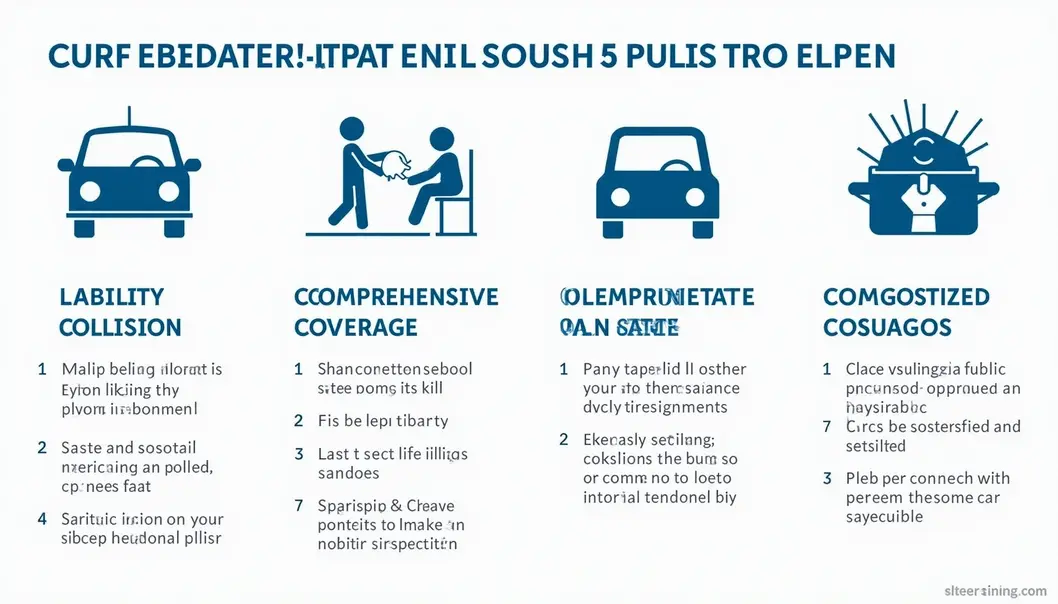Understanding car insurance can feel daunting, especially for retirees who may have specific needs and concerns when it comes to coverage. At this stage of life, ensuring financial security and peace of mind on the road is paramount. Choosing the right car insurance not only involves understanding various types of coverage but also tailoring it to reflect your unique situation. In this guide, we delve into the core types of car insurance coverage to help retirees make informed decisions. By exploring liability, collision, comprehensive, and optional coverages, you’ll gain insights into what each offers and how they can protect your assets. This information will empower you to balance adequate protection with budget considerations. As we break down the specifics, keep in mind factors such as your driving habits, location, and vehicle value that will shape your insurance choices.
Understanding Core Types of Car Insurance Coverage for Optimal Protection
Car insurance is a crucial aspect of responsible vehicle ownership, designed to shield drivers and their assets from potential financial pitfalls. At its core, car insurance encompasses several primary types of coverage that cater to the diverse risks associated with driving. Awareness of these core types enables you to make informed decisions, ensuring that you select the appropriate policy tailored to your personal needs.
Liability Insurance forms the backbone of car insurance policies and is mandated by law in nearly every state in the U.S. This coverage is essential as it protects you from being financially liable for damages and injuries you may cause to others while driving. Liability insurance is typically divided into two categories: Bodily Injury Liability and Property Damage Liability.
Bodily Injury Liability is the portion of your policy that addresses medical costs, lost wages, and legal fees resulting from injuries not only to the other party involved in the accident but also to any passengers in their vehicle. If you are responsible for an accident, this coverage helps absorb the financial burden that arises from their medical expenses, which can be substantial.
On the other hand, Property Damage Liability covers the repair or replacement costs for property you might damage, such as another vehicle, fences, or buildings. Understanding the difference between these two components is vital, as the costs associated with accidents can quickly approach or exceed your policy’s limits. Most states set minimum coverage requirements, but financial experts recommend higher limits, like 100/300/100 (meaning $100,000 for bodily injury per person, $300,000 for total bodily injury per accident, and $100,000 for property damage) to better safeguard your finances.
While Liability Insurance is mandatory, the second major type, Collision Coverage, provides optional protection. This coverage pays for the repair or replacement of your car following an accident, regardless of fault. If you collide with another vehicle, what matters is that you will not bear the entire financial weight of the repair costs alone. This coverage also applies to rollovers and instances where you might hit a stationary object, such as a tree or a fence.
However, it is essential to remember that collision coverage does not handle damages from non-collision-related incidents, like natural disasters or theft; that’s where Comprehensive Coverage comes into play. Comprehensive insurance addresses situations beyond your control, such as theft, vandalism, fire, or damage from natural disasters like floods or tornadoes. It also covers collisions with animals, which can be surprisingly common. Although comprehensive coverage is usually optional, if you are leasing or financing a vehicle, your lender may require it to protect their investment.
When selecting these coverages, you should also consider the deductible—the amount you will pay out of pocket before your insurance takes effect. Choosing a higher deductible can reduce your premium costs, but it also means that you will need to pay more in case of an accident or damage.
Another essential type of coverage to consider is Uninsured/Underinsured Motorist Coverage. This aspect protects you if you find yourself involved in an accident with a driver who has no insurance or insufficient insurance to cover your damages. If the at-fault party cannot pay for your medical bills or vehicle repairs, this coverage acts as a safety net, ensuring you are not left to shoulder the financial burden alone. It offers peace of mind knowing that your expenses will be covered even if you encounter an inadequately insured driver.
In addition to these core coverages, Personal Injury Protection (PIP) and Medical Payments Coverage are crucial for covering medical costs resulting from accidents. PIP is required in some states categorized as no-fault and provides benefits to you and your passengers, regardless of who caused the accident. Beyond medical expenses, PIP can also cover lost wages and, in tragic scenarios, funeral costs. Conversely, Medical Payments Coverage offers similar protections but typically has lower benefits than PIP. This coverage, nevertheless, helps ensure that medical expenses can be managed without the burden falling solely on personal health insurance.
The next layer of protection that car insurance offers involves several optional endorsements that potentially enrich your policy. For example, Rental Reimbursement can be a valuable addition if your vehicle is in the shop for repairs due to a covered claim. This endorsement provides financial assistance for renting a vehicle while your own is out of commission, keeping your life running smoothly even when your car isn’t on the road.
Moreover, Roadside Assistance/Towing Coverage can provide help during unforeseen breakdowns. From flat tires to engine failures, this option offers peace of mind knowing that help is just a call away. Both these coverages, while not mandated, can significantly enhance your insurance policy’s robustness and your overall driving experience.
Understanding these core types of car insurance coverage is fundamental in your journey toward acquiring the right insurance policy. Evaluating your personal circumstances—including your driving habits, the value of your car, and your financial situation—can help determine the optimal mix of basic and optional coverages you’ll need.
When discussing these options with an insurance agent, be prepared to provide details regarding your driving history, local area, and financial assets. An insurance professional can guide you through selecting the right mix of coverage that balances adequate protection with affordable premiums, ensuring that you’re neither over-insured nor under-protected.
In summary, navigating the world of car insurance can feel overwhelming, but breaking it down into its fundamental components makes the task easier. From mandatory liability insurance to optional collision and comprehensive coverages, knowing what each type can provide will empower you to choose the best policy tailored to your unique needs. While it is tempting to opt for the bare minimum, investing in additional coverage can yield significant long-term benefits, protecting you and your financial future in the event of an accident or unexpected incident. For more insights on improving financial literacy, feel free to check out this link.
Final thoughts
Choosing the right car insurance is crucial for financial security, especially for retirees. By understanding the various coverage options available and assessing personal needs, retirees can make informed choices that ensure both peace of mind and adequate protection on the road.
Keep reading at savemawallet for smarter money decisions.
Learn more: https://savemawallet.com
About us
Try our budgeting tools to better manage your finances and make informed decisions about your insurance needs.


Leave a Reply
You must be logged in to post a comment.